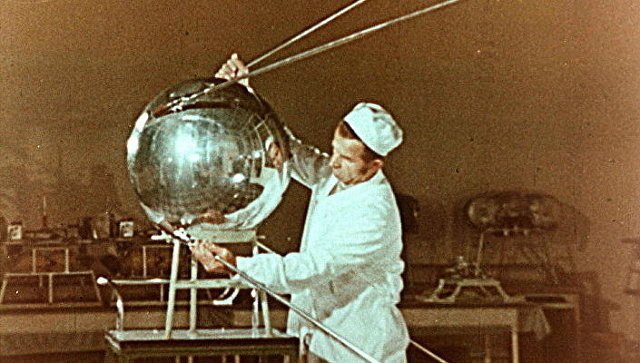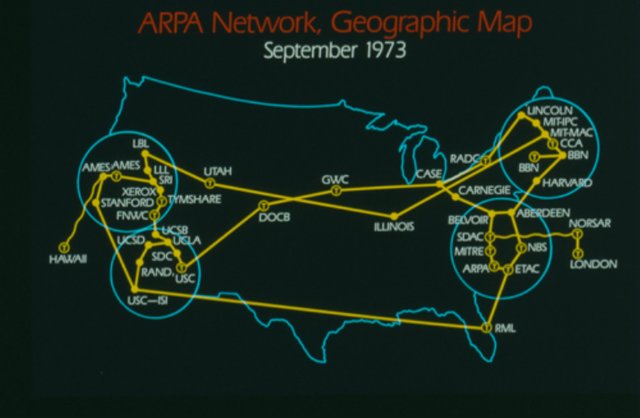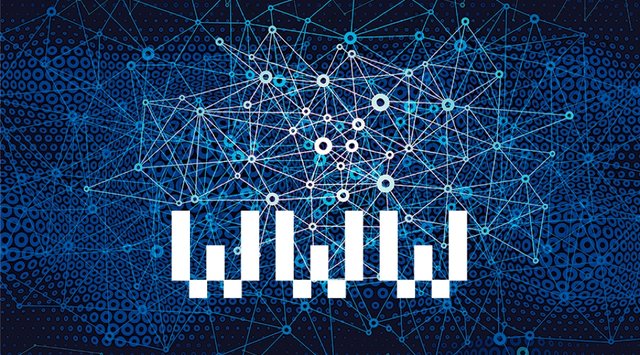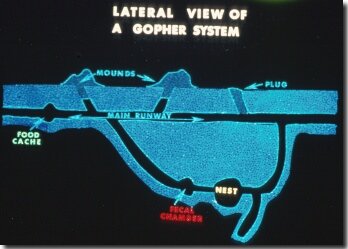Did You Ever Wonder Who Invented The Internet And Why?
While the World Wide Web was originally invented by one person (Tim Berners-Lee), the genesis of the internet itself was a teamwork by numerous people, sometimes working in concert, and other times independently.

Its birth takes us back to the extremely competitive technological contest between the US and the USSR during the Cold War. The Soviet Union sent the satellite Sputnik 1 into space on October 4, 1957.

(Source)
Its Original Mission
Partially in response, the American government created in 1958 the Advanced Research Project Agency, known today as DARPA—Defense Advanced Research Projects Agency. The agency’s specific mission was to prevent technological surprises like the launch of Sputnik, which signaled that the Soviets had beaten the U.S. into space.
The mission statement has evolved over time. Today, DARPA’s mission is still to prevent technological surprise to the US, but also to create technological surprise for its enemies. To coordinate such efforts, a rapid way to exchange data between various universities and laboratories was needed.
This bring us to J. C. R. Licklider who is largely responsible for the theoretical basis of the Internet, an “Intergalactic Computer Network.”
His idea was to create a network where many different computer systems would be interconnected to one another to quickly exchange data, rather than have individual systems setup, each one connecting to some other individual system.
He thought up the idea after having to deal with three separate systems connecting to computers in Santa Monica, the University of California, Berkeley, and a system at MIT:
"For each of these three terminals, I had three different sets of user commands. So if I was talking online with someone at S.D.C. and I wanted to talk to someone I knew at Berkeley or M.I.T. about this, I had to get up from the S.D.C. terminal, go over and log into the other terminal and get in touch with them…. I said, oh man, it’s obvious what to do: If you have these three terminals, there ought to be one terminal that goes anywhere you want to go where you have interactive computing. That idea is the ARPAnet.” (Source)
So, the idea for the internet as we know it partially came about because of the seemingly universal human desire to not have to get up and move to another location. With the threat of a nuclear war, it was necessary to decentralize such a system, so that even if one node was destroyed, there would still be communication between all the other computers.

The American engineer Paul Baran provided the solution to this issue; he designed a decentralized network that also used packet switching as a means for sending and receiving data.
Contributors And Pioneers
Many others also contributed to the development of an efficient packet switching system, including Leonard Kleinrock and Donald Davies.
If you’re not familiar, “packet switching” is basically just a method of breaking down all transmitted data—regardless of content, type, or structure—into suitably sized blocks, called packets.
For instance, if you wanted to access a large file from another system, when you attempted to download it, rather than the entire file being sent in one stream, which would require a constant connection for the duration of the download, it would get broken down into small packets of data, with each packet being individually sent, perhaps taking different paths through the network.
The system that downloads the file would then re-assemble the packets back into the original full file.The platform mentioned above by Licklider, ARPANET was based on these ideas and was the principle precursor to the Internet as we think of it today.
It was installed and operated for the first time in 1969 with four nodes, which were located at the University of California at Santa Barbara, the University of California at Los Angeles, SRI at Stanford University, and the University of Utah.
First "Internet"
The first use of this network took place on October 29, 1969 at 10:30 pm and was a communication between UCLA and the Stanford Research Institute. As recounted by the aforementioned Leonard Kleinrock, this momentous communiqué went like this:
We set up a telephone connection between us and the guys at SRI… We typed the L and we asked on the phone,
“Do you see the L?”
“Yes, we see the L,” came the response.
We typed the O, and we asked, “Do you see the O.”
“Yes, we see the O.”
Then we typed the G, and the system crashed… Yet a revolution had begun. (Source)
The Revolution Begins
By 1972, the number of computers that were connected to ARPANET had reached twenty-three and it was at this time that the term electronic mail (email) was first used, when a computer scientist named Ray Tomlinson implemented an email system in ARPANET using the “@” symbol to differentiate the sender’s name and network name in the email address.
Alongside these developments, engineers created more networks, which used different protocols such as X.25 and UUCP. The original protocol for communication used by the ARPANET was the NCP (Network Control Protocol). The need for a protocol that would unite all the many networks was needed.

In 1974, after many failed attempts, a paper published by Vint Cerf and Bob Kahn, also known as “the fathers of the Internet,” resulted in the protocol TCP (Transmission Control Protocol), which by 1978 would become TCP/IP (with the IP standing for Internet Protocol).
At a high level, TCP/IP is essentially just a relatively efficient system for making sure the packets of data are sent and ultimately received where they need to go, and in turn assembled in the proper order so that the downloaded data mirrors the original file.
So, for instance, if a packet is lost in transmission, TCP is the system that detects this and makes sure the missing packet(s) get re-sent and are successfully received. Developers of applications can then use this system without having to worry about exactly how the underlying network communication works.
On January 1, 1983, “flag day,” TCP/IP would become the exclusive communication protocol for ARPANET. Furthermore, Paul Mockapetris proposed a distributed database of internet name and address pairs, now known as the Domain Name System (DNS).
Birth of Modern Internet
This brings us to 1989 when Tim Berners-Lee of CERN (European Organization for Nuclear Research) developed a system for distributing information on the Internet and named it the World Wide Web.What made this system unique from existing systems of the day was the marriage of the hypertext system (linked pages) with the internet; particularly the marriage of one directional links that didn’t require any action by the owner of the destination page to make it work as with bi-directional hypertext systems of the day.

It also provided for relatively simple implementations of web servers and web browsers and was a completely open platform making it so anyone could contribute and develop their own such systems without paying any royalties.
In the process of doing all this, Berners-Lee developed the URL format, hypertext markup language (HTML), and the Hypertext Transfer Protocol (HTTP). Around this same time, one of the most popular alternatives to the web, the Gopher system, announced it would no longer be free to use, effectively killing it with many switching to the World Wide Web.

Today, the web is so popular that many people often think of it as the internet, even though this isn’t the case at all. Also around the time the World Wide Web was being created, the restrictions on commercial use of the internet were gradually being removed, which was another key element in the ultimate success of this network.
The rest, as they say, is just history....
Bonus Fact: The word “internet” was used as early as 1883 as a verb and adjective to refer to interconnected motions, but almost a century later, in 1982, the term would, of course, be used to describe a worldwide network of fully interconnected TCP/IP networks.
Sources:
The Defense Advanced Research Projects Agency (DARPA)
Paul Baran and the Origins of the Internet
All that work. All that time. So many years, probably a few tears, maybe a celebration or two that included beers. Everything they did leads up to this moment where I send the word:
Ass
... all over the world, and for no apparent reason at all.
Thank you for this wonderful information.
Hahahaha. You are welcome.
Thank you for the laugh, mate ;)
You're welcome. I always like opening with a joke.
I bet they had some of the same arguments back then that many people who use this technology(Steemit/blockchain) have today. Kind of gives me hope.
The best invented that change The World
I wish I spoke the language you speak :)
Great post @tkappa
Thanks @rizwan123
And look where it's going now!
It changes not only the whole world but also the whole life of ourselves.
Excellent! Excellent post!!!!
Well done @tkappa 😀!!!
Thanks @alinak15 :)